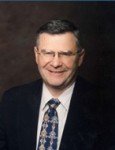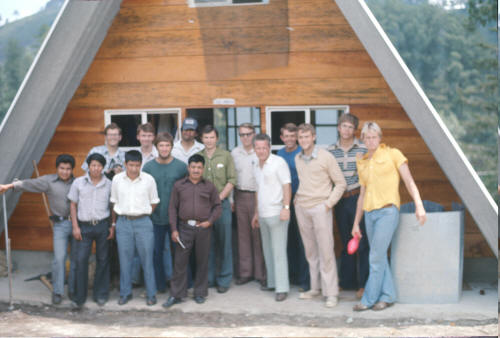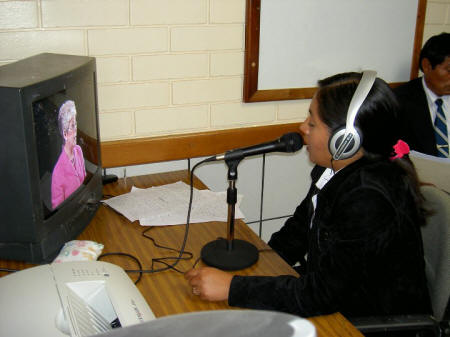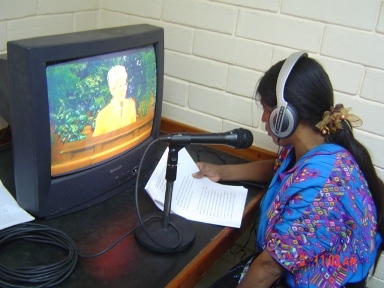A History of Cakchiquel (Kaqchikel) Translation in The Church of Jesus Christ of Latter-day Saints
Language Background
Spanish is the official language of Guatemala, and is spoken in the major cities (30% of the population) and among the Latin people who live in the towns. There are also 23 native languages, which are mostly from the Mayan language family. Read an overview of languages in Guatemala. This assortment of languages causes several social, economic, educational, linguistic, and political challenges. For additional information, read Problems of a Divided Society: The Conflicting Cultures of Guatemala, by Larry Richman.
Cakchiquel (or, as spelled in modern orthography, Kaqchikel), is an indigenous Mesoamerican language from the Mayan family of languages. It is spoken by about 500,000 indigenous people in central Guatemala (most notably in and around the cities of Patzicía, Patzún, Tecpán, Sololá, Chimaltenango, Comalapa, and San José Poaquil).
There are three major orthographies (systems of spelling) used in modern Cakchiquel:
- The 1969 grammar book Cakchiquel Basic Course (by Robert W. Blair, Kristine Campbell, Lyle Campbell, John S. Robertson, et. al.) used an orthography using the number 7 for a glottal stop, the letter k for the hispanic c/qu, and q for the hispanic k. (Read about it beginning on page xviii of volume 1.)
- The translations published by The Church of Jesus Christ of Latter-day Saints (see list) from 1976 to the 1980s and the 1981 Diccionario Español-Cakchiquel-Inglés used the orthography used by translators of the New Testament.
- The standardized orthography of the Guatemalan languages established by the Academia de Lenguas Mayas de Guatemala (Guatemalan Academy of Mayan Languages), which was founded in 1990. This changed the letters c/q to k and k to c/q, effectively changing the spelling of the language from “Cakchiquel” to “Kaqchikel.”
The Cakchiquel translations listed on this site were published prior to the 1990s, and therefore use the orthography #2 listed above (which spells the language as “Cakchiquel”). See a guide that explains the various orthographies (spelling systems) used over the years in Cakchiquel (Kaqchikel) and how to convert from one orthography to another.
Church Membership
As of 2013, there were about 7,000 members of The Church of Jesus Christ of Latter-day Saints who speak the Cakchiquel language. They are primarily in the following Church units:
- Chimaltenango: Chimaltenango 1st Ward, Chimaltenango 3rd Ward, Chimaltenango Guatemala Stake
- Nahualá: Chirijox Ward, El Calvario Ward, Xeraxon Ward
- Panajachel: Panajachel Branch
- Patzicía: El Calvario Ward, Patzicía Ward, Zarahemla Ward, and Patzicía Guatemala Stake
- Patzún: Patzún Ward
- San Andres Itzapa: San Andres Itzapa Ward
- San Martín Jilotepeque: San Martín Jilotepeque Branch
- Santiago Atitlán: Santiago Atitlán Branch
- Sololá: San Andrés Semetabaj Branch, Sololá 1st Branch, Sololá 2nd Branch
1960s
Cakchiquel Basic Course
James J. Stone was a missionary in Guatemala from 1966-1968. He was one of the first three Elders to work with Cakchiquel, under President Hansen. He reports that Dr. Robert Blair from BYU visited Guatemala with Roger Thompson for a few weeks. Then later, Dr. Blair, Roger Thompson, and other graduate students returned to Guatemala. They went back to BYU and worked on the grammar book Cakchiquel Basic Course, under a grant from the U.S. Department of Health, Education & Welfare. It was published in 1969 under the names of Robert W. Blair, Kristine Campbell, Lyle Campbell, John S. Robertson, James J. Stone, Roger M. Thompson, Abraham Juracán, Enoe de Jesús Matzer, and Benton Smith. He also worked with the BYU Linguistics Dept to direct recordings of native speakers reading Book of Mormon sections.
Read online the Cakchiquel Basic Course, volumes 1 and 2.
Book of Mormon Translation and Recordings
The team that worked on the Cakchiquel Basic Course also created an initial audio recording of portions of the Book of Mormon. The audio recordings were done by Manuel Thai (Solola) and Daniel Mich (Patzicia) in about 1968.
At about that time, a series of dramatic readings were prepared, titled “Ri C’atzinel Chire ri Kac’aslen” (What’s Important in Our Lives). Listen to the audio file.
1970s
In February 1975, a dozen elders were assigned to work among the Cakchiquel Indians in central Guatemala. A linguist from BYU, Dr. Robert Blair, came down to Guatemala and taught the missionaries a few weeks of Cakchiquel. He not only taught them the language, but also taught them techniques to learn a language, so that after he left, they could continue learning among the people. Learn more about this Cakchiquel class.
Missionary Discussions, Baptism Prayer, Sacrament Prayers, Articles of Faith
In September 1975, Brother Eb Davis from the Church translation department began visiting missionaries in Guatemala. He was living in Mexico City and oversaw Church translation work in Mexico and Central and South America. On September 9, 1975, he met with President Arnold and all the elders who were learning Cakchiquel. President Arnold had requested the translation of the Book of Mormon, Doctrine and Covenants, pamphlets, missionary discussions, and filmstrips in nine native languages. See a list of Church materials translated into Cakchiquel as of September 8, 1975.
In subsequent meetings (April 18, 1976, and May 13–14, 1976), Brother Davis asked Elder Larry Richman and Elder David Frischknecht to review a draft of simplified missionary lessons to see how effective they could be when translated into the Mayan languages in Guatemala. Elder Richman had already begun translating hymns into Cakchiquel for the members in the branches to sing, and he eventually translated about 85 hymns.
On May 14, 1976, a translation team met in Patzún, Guatemala, at the home of Julio Teleguario (an educated nonmember man). Attending were Brother Eb Davis, Elder David Frischknecht, Elder Larry Richman, Julio Salazar (recently returned missionary), Hernán Tum (first counselor in the branch presidency), and Julio Teleguario. They finalized the translations of the 13 Articles of Faith and the baptism prayer, considered a name for the Church, and discussed key Church terminology.
Over the next several weeks, Elder Richman worked on translating more of the missionary lessons while also doing missionary work in Comalapa and Sololá. Elder Richman, Elder Frischknecht, and Julio Salazar would routinely meet in Patzicía to work on translations.
On June 15–16, 1975, Eb Davis, Julio Salazar, Elder Frischknecht, Elder Howard, and Elder Richman met with Julio Teleguario and others to continue work on the sacrament prayers, baptism prayer, Articles of Faith, and name of the Church. They also discussed a standard for orthography.
On July 7, Elder Richman, Elder Frischknecht, and Julio Salazar notified their mission president, John O’Donnal, that at their current pace, they would not have the missionary discussions finished by July 20 when Eb Davis was due to return. President O’Donnal then reassigned Elders Richman and Frischknecht to work full-time on translations in Patzicía, which began on July 9. Elders Richman and Frischknecht set up sleeping quarters in a cinderblock room in the corner of the Church lot next to the silo, and a translation office in room #4 of the church building (one of the few rooms of the church building still standing after the earthquake). Elder Frischknecht did most of the translation and Elder Richman did most of the typing. In the zone conference on July 13, President O’Donnal announced that Elders Richman and Frischknecht had been asked to end their proselyting missions early and work full-time on translations. After the translations were completed, Elder Frischknecht would set up language classes for missionaries to learn Quiché.
From then until early August, Elder Richman, Elder Frischknecht, and Julio Salazar worked tirelessly on translations. For some of the time, Sister Sharp helped type the translations. These missionary discussions are available online. See photos of the translation office on this page.
On Sunday, August 1, 1976, the missionaries used the new Cakchiquel sacrament prayers for the first time, during a sacrament meeting in Itzapa. Elder Richman gave the prayer on the bread and Julio Salazar gave the prayer on the water.
On Elder Richman’s return flight home from his mission with his parents, he stopped in Mexico City on August 6, 1976, and delivered to Brother Davis the typed copy of the missionary discussions ready for printing.
Preparation of Simplified Church Materials
President O’Donnal outlined for Eb Davis what the mission hoped to accomplish and their dire need for simplification and translation of materials, especially in the four major Mayan languages: Quiche, Cakchiquel, Kekchi, and Mam. This included the following basic materials: Gospel Principles manual, Duties and Blessings of the Priesthood manual, the LDS Woman manual, Walk in His Ways manual for children, the illustrated Book of Mormon Stories, the simplified missionary discussions, and simplified organizational guidebooks for families, groups, small branches, and priesthood leaders. On a subsequent visit, Brother Davis brought Josiah Douglas from the Church Curriculum Department. Brother Douglas then returned to Salt Lake to begin preparing the simplified materials. The Gospel Principles manual was published in English in August 1977, and the other manuals were published in January and February 1978. They were then translated into Spanish and the four Indian languages.
In his history of the Church in Guatemala, mission president John O’Donnal wrote the following: “Three exceptionally dedicated elders who had learned to speak Cakchiquel well, had been chosen to start simplifying and translating the discussions which were too lengthy and complicated for teaching the Indians. They were also asked to prepare guidebooks, and to initiate a language training course for missionaries learning to speak the Indian languages, beginning with Cakchiquel. These missionaries, Elder David Frischknecht, Elder [Julio Salazar] and Elder Larry Rich[man], were nearing the end of their mission, so I requested their term be extended…. Elder Frischknecht’s mission was extended to December 16, 1976, so he could finish translations of the simplified discussions and other materials.” (Pioneer in Guatemala: The Personal History of John Forres O’Donnal, Shumway Family History Services, Yorba Linda, CA, pp. 148-9.)
Language Training in Indian Languages
From the book Pioneer in Guatemala: The Personal History of John Forres O’Donnal:
When Elder Spencer W. Kimball was given the responsibility of supervising all the missions in South America, before departing to visit that continent in October 1965, he called on President David O. McKay to discuss his vision for the Indians of South America. Of this visit he wrote:
He was ready and very gracious… I took my large map of South America and laid it out on the table….and told him of the millions of Indians [on] the Altaplano of the Andes range. He asked me, “Millions?” And I said, “Yes, President McKay, there are millions and they are pure-blood Indians who speak diffirent Indian tongues and dialects…. I explained to him that we now have linguists in the Church [who can teach the missionaries the Indian languages so] that they could hear the Gospel, every man in his own tongue…. I said to him, President McKay,… I think the time of the Lamanite has come for them to hear the Gospel.” And he said, “Yes, it is time and they must hear it and you are the one of the Twelve who has the vision of it…. You have my blessing.” (Emphasis added)
(Spencer W. Kimball, p. 361)
As mentioned earlier, it was also one of my goals when I was called as mission president that the gospel be taught to the Indians in their own language. The language training in the Cakchiquel language initiated by Robert B. Arnold was resumed and intensified in August 1976 in Patzicia, Chimaltenango….
Only after prayerful consideration and receiving inspiration, were dedicated elders and sister missionaries selected for this program. They needed to have learned Spanish well and been in the mission at least six months. Spanish-speaking missionaries were also selected. We were then beginning to receive native missionaries from these areas who were paired off with those learning the language…. The missionaries being trained were instructed in the classroom throughout the day, then in the evening they were paired off with missionaries who could speak the language or with native missionaries, for experience in teaching and conversing with the Indians in their language…. After a short period of only six weeks these missionaries were ready and could speak the language well enough to be assigned to regular proselyting. (Pioneer in Guatemala: The Personal History of John Forres O’Donnal, Shumway Family History Services, Yorba Linda, CA, pp. 149-50)
The Provo MTC started teaching Cakchiquel on January 15, 1978.
Cakchiquel Language Book for the Language Training Mission
In 1977, the manual Cakchiquel: A Basic Course for Language Learning was published by the Language Training Mission (now called the Missionary Training Center) of The Church of Jesus Christ of Latter-day Saints. The course was written by John Robertson and Julio Salazar (a returned missionary from Guatemala who learned Cakchiquel on his mission in 1974-1976).
Scripture translations
David Frischknecht and Larry Richman returned to Guatemala during the summer of 1977 to translate the Book of Mormon into Cakchiquel. David and Larry had been companions twice during the mission. David did the initial translation with a native Cakchiquel speaker from Patzún and Larry Richman typed the translations and then reviewed them with a group of Church members from Patzicía and Patzun. It was an intense project, working day and night. That summer, they translated the Selections from the Book of Mormon, a number of sections from the Doctrine and Covenants, and many hymns. See more detail about the scripture translation process on the page Translator, Linguist, and Cultural Anthropologist.
Dictionaries
In the summer of 1978, Drs. Robert Blair and John Robertson of the BYU Linguistics Department took a group of 11 linguistics students to Guatemala to compile several dictionaries of Guatemalan languages. These BYU students donated their summer to compile learner’s dictionaries with the hope of helping missionaries and others who wanted to learn the native Mayan languages. Larry Richman, Julio Salazar, and Greg Sansom worked on the Cakchiquel dictionary, along with native speakers Juan Yool and Alejandro Choc. See more detail about this effort on the page Translator, Linguist, and Cultural Anthropologist.
Upon returning to BYU, Larry Richman spent the next several months editing the Cakchiquel manuscripts and preparing a trilingual Cakchiquel-Spanish-English dictionary. In 1981, the Diccionario Español-Cakchiquel-Inglés was published by Garland Publishing, in New York City. The dictionary is now available online.
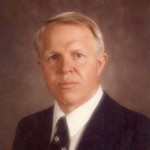
Robert W. Blair in 1998
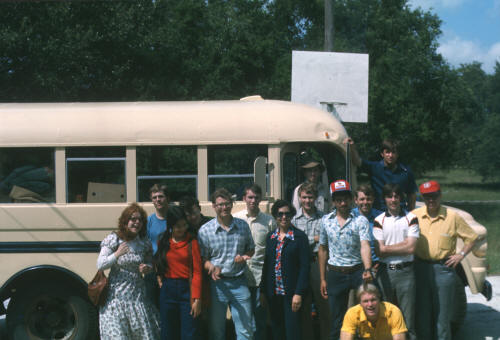
The linguistic group in front of the 1955 school bus they drove to Guatemala.
Front row (left to right): Margaret Blair, Lluvia, Steve Wilson, Olivia, Julio Salazar, Myron, Robert Blair, Greg Sansom (kneeling). Back row (left to right): Randy Ellsworth, John Robertson, Doug Tedford, John Bringhurst, Larry Richman, Mike, Hugh Biesinger.
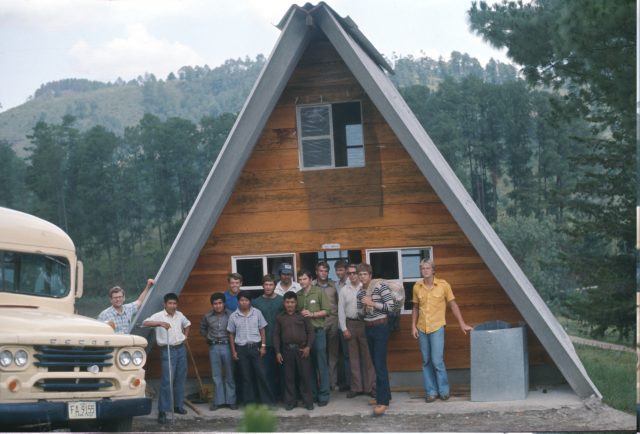
The dictionary team stayed in Valparaiso near Cobán. Front row (left to right): Steve Wilson, Julian Acabal, Juan Yool, Alejandro Choc, Juan. Second row (left to right): Larry Richman, Hugh Beisinger, John Robertson, Robert Blair, Randy Ellsworth.Greg Sansom. Back row (left to right): Julio Salazar, John Bringhurst, Doug Tedford.
Audio Recordings of Cakchiquel Translations
In 1978, Larry Richman was hired by BYU Sound Services to find a studio and Cakchiquel speakers to record the Testimony of the Prophet Joseph Smith pamphlet, the Gospel Principles manual, and Selections from The Book of Mormon. These audio recordings were an attempt to address the educational dilemma described on the About Guatemala page. Because many of the people are illiterate—or if they read, are unable to read their native language fluently—the Church made audio recordings of some of the Cakchiquel translations so the people could listen to them.
After much searching, Larry was able to find two native Cakchiquels who could read fairly fluently—a member of the Church who was finishing up high school and a teacher who was not a member of the Church. He rented a recording studio in Guatemala City and spent about a month recording. It then required considerable editing at BYU Sound Studios. After proofing the edits, the recordings were eventually duplicated and distributed in October 1979, but not widely. Later, in December 2000, the recordings were digitally re-mastered and reissued with new packaging. See a list of Cakchiquel materials.
Culture Book for Missionaries
The manual Culture for Missionaries: Guatemala Indian was written to help LDS missionaries understand the cultures of the native peoples of Guatemala. Larry Richman wrote the text in 1979 for the Missionary Training Center (MTC). Review copies were sent to the current and former mission presidents (Willard I. Skousen, Robert B. Arnold, and John O’Donnal). After clearing Church Correlation, the manual was published in 1980.
Translation of the LDS Temple Ceremonies into Cakchiquel
The initiatory ordinances, endowment, and sealing ceremonies were translated by Larry Richman during August and September 1979. They were later reviewed by David Frischknecht in December 1980 and later by Pablo Choc. During the latter part of May 1991, Larry Richman worked with two native Cakchiquel speakers (Rigoberto Miza and Martín Per) to complete the native language review. During those two weeks, they made many revisions which improved the readability and understandability of the translation. Rigoberto and Martín were a good team, representing two different dialects and two age groups (both major concerns with the Cakchiquel translations). There was a good spirit about the work. During that time, they had the added benefit of two Quiché natives (Angel Chavez and Vidalmino Sarate) and two Quiché speakers (Alan Christensen and Hugh Biesinger) who were also in Salt Lake working on the Quiché translations. Since Quiché is a sister language to Cakchiquel, they were able to consult and share ideas, which were very helpful. The translations were certified on June 4, 1991, with Brother Metcalf (the managing director of the Temple Department), two others from the Temple Department, Eb Davis, Justus Ernst, Hugh, Alan, me, and the four brothers from Guatemala.
Another review of the translation was done with the help of two Guatemalans who came to Salt Lake the week of February 24-28, 1992.
The following cast members traveled to the Salt Lake Temple for the recording beginning June 8, 1992: Martín Per Toj, Santos Per Mich, Felisa Holegario Choy de Choc, Rigoberto Miza Moxo, Ruben Meren Ajsivinad, Rolando Mich Cua, and German Tun lxem. The week prior to the recording, Martín Per Toj and Rigoberto Miza Moxo came to assist with the final review of the translation.
On November 9, 2005, Larry Richman spent the afternoon in the Salt Lake Temple with the audiovisual sound engineers reviewing the audio recording of the Cakchiquel temple endowment. They recently re-edited it for their new digital equipment and asked Larry to verify that the editing was correct to match the two temple films.
1980s
In the 1980s, many more LDS materials were translated into Cakchiquel. See a list of the LDS materials translated into Cakchiquel (Kaqchikel). See a Church News report about emerging translations in the Church.
One session of general conference was interpreted into Cakchiquel, Quiché, and Kekchí every six months. Translators and interpreters included David Frischknecht, Julio Salazar, Fulgencio Choy, Martin Per, Feliciana Xocop, Elma Miza, Greg Sansom, Gary Larson, and me. In about 2005, processes were set up in Guatemala for people in-country to interpret and have the interpretation transmitted by satellite to the various towns.
More Information
If you have additional information to add to this page or corrections for any of the above information, please contact Larry Richman.
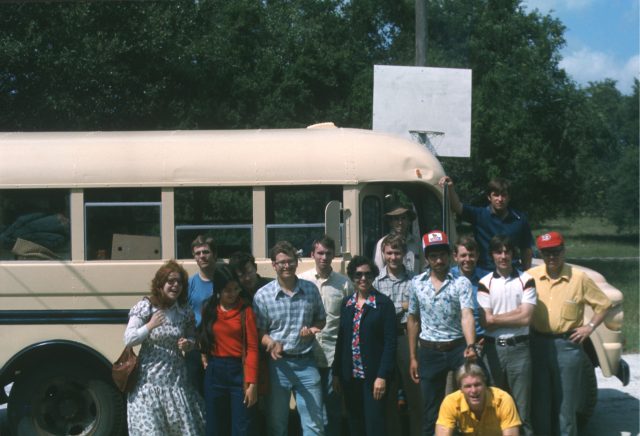
The linguistic group in front of the 1955 school bus they drove to Guatemala.
Front row (left to right): Margaret Blair, Lluvia, Steve Wilson, Olivia, Julio Salazar, Myron, Robert Blair, Greg Sansom (kneeling). Back row (left to right): Randy Ellsworth, John Robertson, Doug Tedford, John Bringhurst, Larry Richman, Mike, Hugh Biesinger.
Related pages:

